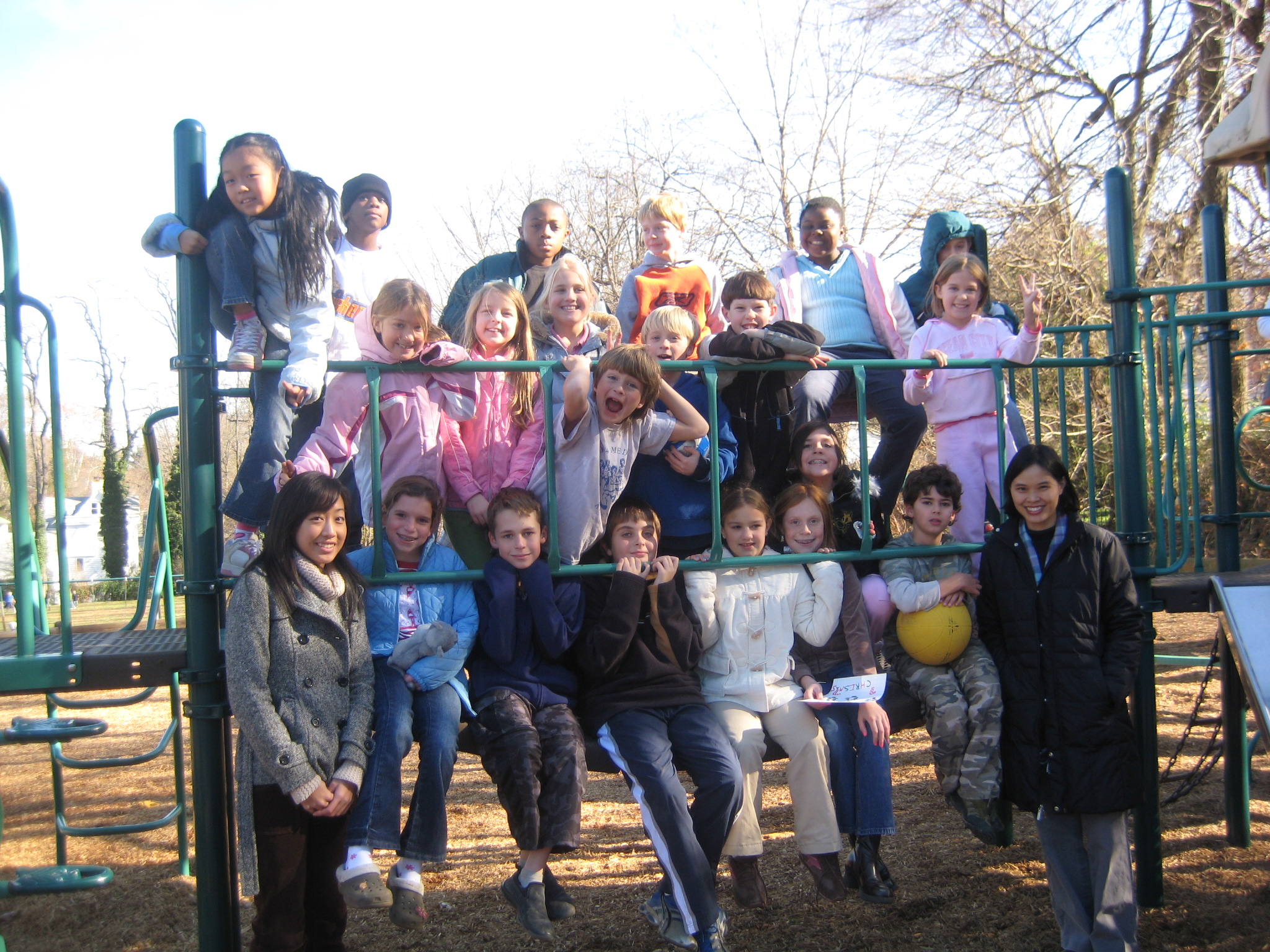
My student teaching experience took place in a fourth grade classroom at Wallingford Elementary School (WES). Located in the Pennsylvania town of Wallingford and the Wallingford-Swarthmore School district, WES thrived in a predominantly upper-middle class community. WES is also a 3 minute train ride from Swarthmore College, a local liberal arts college that I attended. According to the school’s website, “ ‘Just the facts’ does not cut it here. Students are actively engaged in meaningful learning experiences. As a result they gain a wealth of skills, vast amounts of knowledge, and a genuine life-long love for learning.” There are opportunities for students to pursue their interests through before and after school activities such as French or Spanish Club, and numerous in-school enrichment activities such as the Global Warming Group, instrument lessons, Student Council, or Math Olympiad. Children participate in these activities based on personal interest, and are expected to balance both extracurricular activities and academic curriculum. Some activities involve parent support, and parents are usually actively engaged with the students either through the home, school, or both. The school also seems to strive to provide an environment where individual attention is given to all those who need it, especially through their enrichment, IST, and IEP programs.
Statistically, the school serves approximately 430 students, from grades one to five. While there are students representing minority groups in a large a range of ethnic identities, but 79.1% of students are white. 9.8% are Asian, Asian American, or Pacific Islander, 9.3% are African American, and 1.9% are Hispanic. (statistics from schoolmatters.com) In my student teaching classroom, there were 21 students. Three were African American, one was Asian American, and several spoke various languages such French, Spanish, Rusian, Hebrew, Chinese, and Greek. There is also some religious diversity in the classroom. Most students mentioned that they were Catholic, Christian, or Jewish.
According to the fourth grade teachers in the school, fourth grade was as an academic leap for many students. Fourth grade was when school became more “academic”, meaning students started to be held more accountable to their learning by taking more tests, student’s responsibility for homework increased, and paragraph and essay writing became an important part of their success in all content areas.
A 4th Grade Classroom
Upon observing the room, the most striking sign was a banner in the back of the classroom that stated “What will you learn today? What will you teach today?” This particular classroom seemed to encourage an atmosphere where students were invited to share their learning and bring in personal interests. The desks were grouped in clusters, with about 4 to 5 desks in each group. Student-crafted, paper-maché globes hung from the ceilings, and carefully made snowflakes spotted the windows. On the board, the “Do Now” was placed at the far left and the daily schedule was placed at the far right. In the back of the room, charts of contractions lined the blackboard, remnants of when students performed “grammar surgery” on words with the “contractionitis” disease. Several poster size board games were propped up on the blackboard, which served as visual aids for students’ Book Share projects. Overall, the classroom provided a supportive and stimulating learning environment, in which students were expected to actively engage in the learning process.
Elisha Ann's Student Teaching Portfolio Home: Best viewed on a PC using Firefox ! Good learning is not a matter of finding a happy medium where both parties are transformed as little as possible. Rather both parties must be maximally transformed – in a sense deformed. There is violence in learning. We cannot learn something without eating it, yet we cannot really learn it either without letting it eat us. ~Peter Elbow, Embracing Contraries in the Teaching Process (1983, p. 223) from Prof. Diane Anderson's ED17 Syllabus
|
|
Hallway bullentin board I helped my cooperating teacher create. As a beginning of the year activity, studenta came up with cluea to add to the class crossword puzzle.
Girls in the class holding the class sign for the annual school Halloween Parade.
|